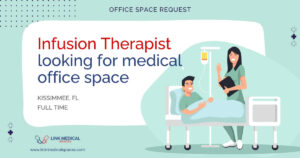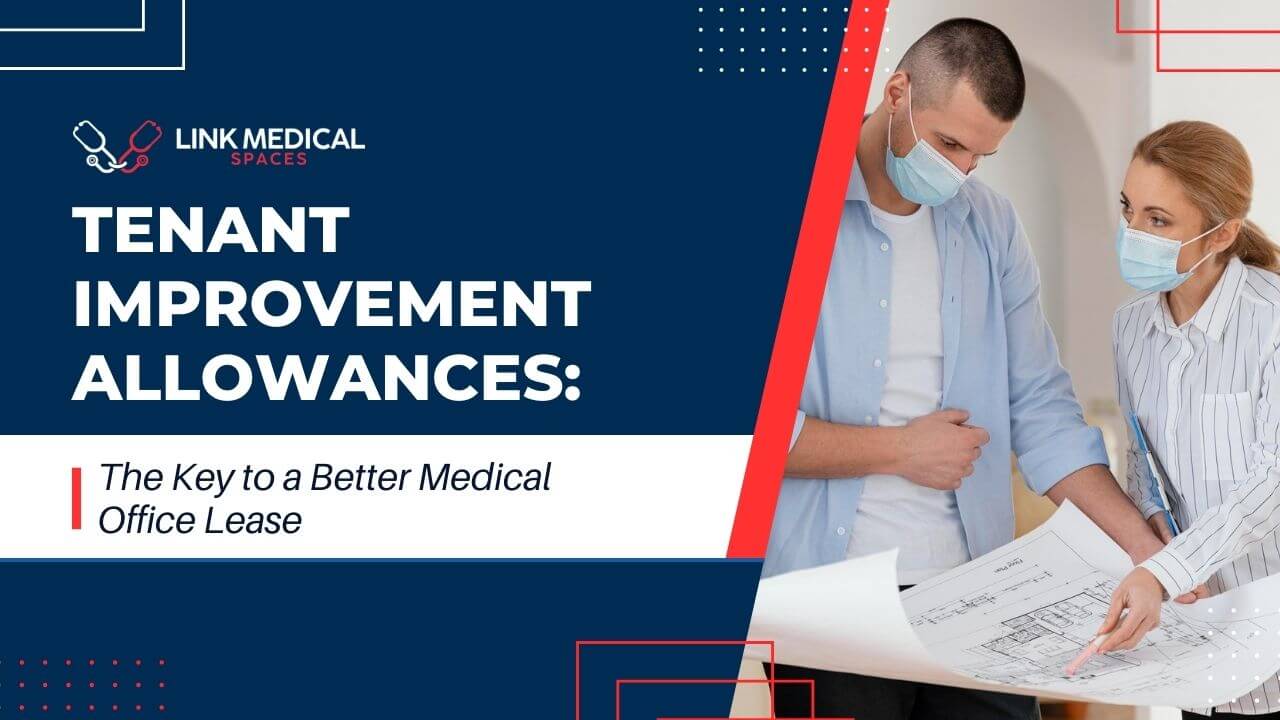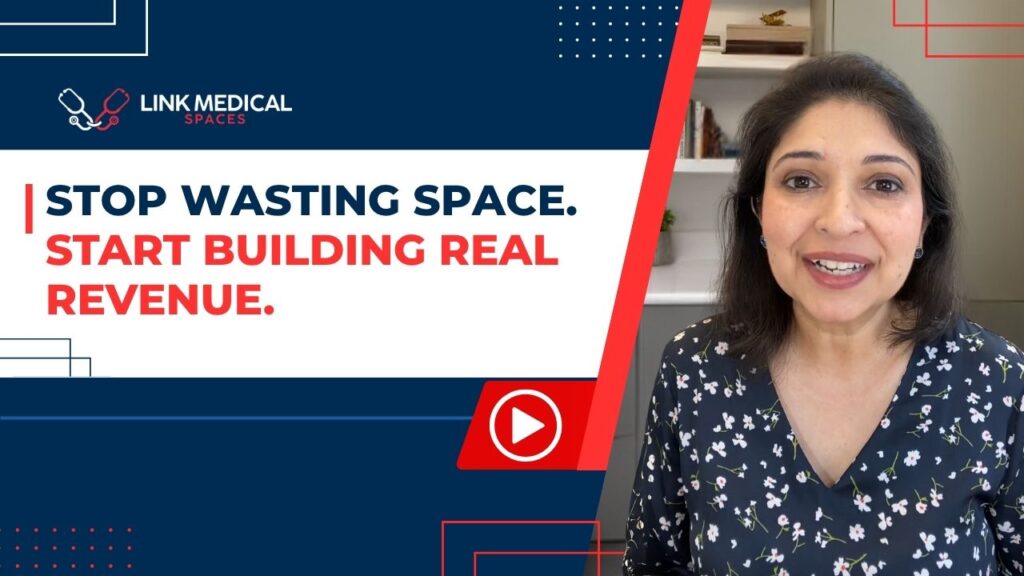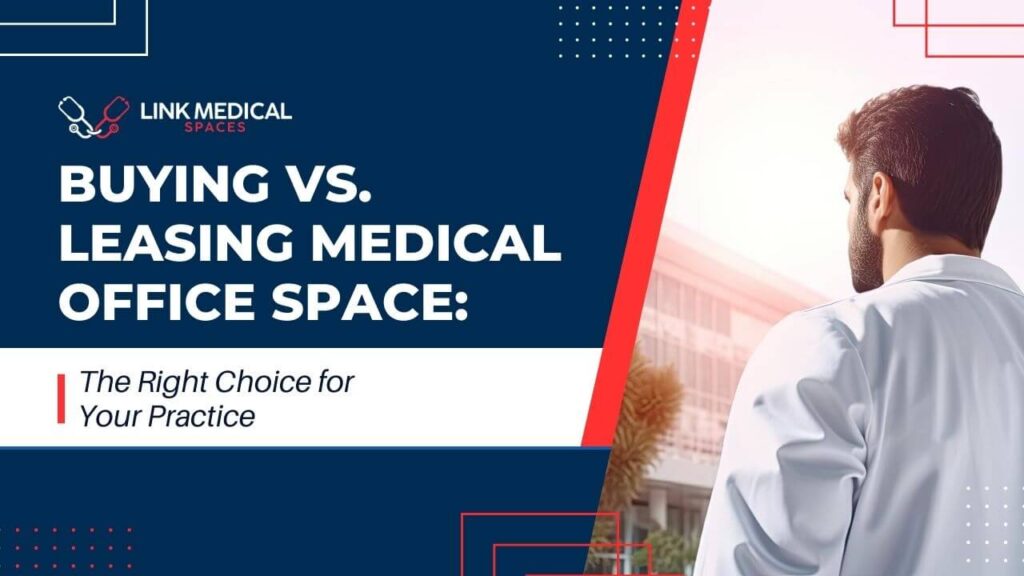Tenant Improvement Allowances (TIAs) are a critical factor in healthcare real estate leasing, allowing medical professionals to customize their office space while enabling landlords to attract long-term, high-quality tenants. Whether you’re a physician launching a new practice, a specialist relocating to a more patient-friendly location, or a landlord looking to enhance your property’s appeal, understanding how TIAs work can make a significant financial and operational difference.
This guide breaks down everything you need to know about Tenant Improvement Allowances, including:
✔ What a TIA is and how it works
✔ How tenants can maximize TIAs to customize their space
✔ How landlords can structure TIAs to attract medical tenants while protecting property value
✔ Key financial and legal considerations when negotiating TIAs
By understanding how to leverage Tenant Improvement Allowances, both tenants and landlords can create win-win lease agreements that support a thriving medical practice while enhancing property value.
What is a Tenant Improvement Allowance (TIA)?
A Tenant Improvement Allowance (TIA) is a financial incentive provided by a landlord to help cover the costs of customizing a leased space to meet a tenant’s specific needs. In healthcare real estate, this often includes modifying the space to accommodate medical equipment, specialized infrastructure, ADA compliance, and patient-friendly layouts.
TIAs can vary widely depending on factors such as:
✔ The length of the lease – Longer leases often come with higher allowances
✔ The property’s location and market demand – Competitive areas may offer larger TIAs
✔ The scope of necessary modifications – Complex medical build-outs require greater funding
In most cases, the tenant is responsible for managing and paying for the improvements, with the landlord reimbursing costs up to the agreed-upon allowance. However, some landlords may prefer to handle the construction themselves, ensuring that modifications align with building standards and long-term property value.
TIAs in Modern Medical Office Buildings
In many newer medical office buildings (MOBs), the need for extensive renovations has decreased. These buildings are often pre-configured to meet medical zoning, ADA accessibility, and basic infrastructure requirements such as:
✔ Wide hallways and doorways for wheelchair access
✔ ADA-compliant restrooms
✔ Enhanced HVAC and air filtration systems
✔ Proper plumbing and electrical for general medical use
For tenants leasing space in modern MOBs, TIAs may be less about bringing a space up to code and more about specialized customizations such as:
✔ Installing imaging or diagnostic equipment (e.g., X-ray, MRI)
✔ Adding lead shielding for radiology rooms
✔ Modifying exam room layouts for specialty practices
✔ Enhancing technology infrastructure for telemedicine
In such cases, landlords may offer a lower TIA, expecting tenants to make only minor modifications rather than extensive structural changes.
Why TIAs Matter for Healthcare Tenants
For healthcare professionals leasing office space, a well-structured TIA can significantly reduce upfront costs and ensure the space meets regulatory and operational needs. Unlike standard office tenants, medical providers often require:
✔ Specialized plumbing and electrical systems to support medical equipment
✔ Additional HVAC capacity to maintain proper air filtration and infection control
✔ Compliance with ADA and healthcare regulations to ensure accessibility and patient privacy
✔ Customized exam rooms, procedure areas, and waiting spaces to enhance workflow and patient experience
Without a sufficient TIA, these costs can fall entirely on the tenant, making it financially challenging to customize a space adequately. Negotiating a strong TIA ensures that healthcare professionals can focus on patient care rather than construction expenses.
Key Negotiation Strategies for Tenants
1. Accurately Estimate Build-Out Costs
Before negotiating, obtain detailed cost estimates from contractors familiar with medical office build-outs. This provides a clear picture of required improvements and a strong basis for requesting a TIA that adequately covers expenses.
2. Request a Higher Allowance in Exchange for a Longer Lease
If a landlord is reluctant to increase the TIA, offering a longer lease term can be a strong bargaining tool. Many landlords are willing to increase the allowance when securing a long-term, stable tenant.
3. Ensure Flexibility in How the TIA is Used
Some lease agreements restrict how the TIA can be spent, limiting it to certain types of improvements. It’s essential to negotiate broad usage rights, including funding for equipment installation, technology infrastructure, and compliance upgrades.
4. Clarify Who Controls the Construction Process
Depending on the agreement, the landlord or tenant may be responsible for managing construction. Tenants should ensure they have input on contractor selection, project timelines, and material quality to avoid delays and subpar work.
5. Ask for an Upfront Disbursement or Rent Credit
Some landlords only reimburse improvement costs after project completion, which can strain a tenant’s cash flow. Negotiating for a portion of the TIA upfront or applying unused TIA funds toward rent can help ease financial burdens.
Why TIAs Matter for Landlords
From a landlord’s perspective, offering a competitive TIA can help attract high-quality tenants and ensure long-term lease commitments. Medical tenants bring stability, reliable income, and low turnover rates, making them highly desirable tenants.
However, landlords must carefully structure TIAs to balance tenant needs with long-term property value. Poorly managed allowances can result in over-customization, which may limit future leasing opportunities if the tenant eventually vacates.
Best Practices for Landlords Offering TIAs
1. Align the TIA Amount with Lease Length & Tenant Quality
Offering a larger allowance to a financially strong tenant with a long-term lease can be a worthwhile investment. However, short-term leases or high-risk tenants may warrant lower TIAs or alternative incentives.
2. Retain Control Over Permanent Modifications
To protect property value, landlords should ensure that major modifications—such as plumbing, HVAC, and structural changes—align with long-term building use. Establishing clear guidelines on the type of improvements allowed prevents excessive customization that may deter future tenants.
3. Consider Managing the Construction Process
Instead of offering a cash allowance, some landlords prefer to handle construction themselves. This approach ensures that:
✔ The work meets building standards and compliance regulations
✔ Costs remain within budget
✔ The property retains its marketability for future tenants
4. Structure the TIA as an Amortized Investment
In some agreements, the TIA may be spread over the lease term, with the cost built into the tenant’s rent. This approach allows landlords to recover their investment while maintaining a competitive lease rate.
Legal & Financial Considerations
✔ Define TIA Terms Clearly in the Lease
The lease agreement should explicitly state:
- The exact TIA amount
- What expenses qualify for reimbursement
- The process for requesting and receiving funds
- Who manages the build-out and timelines
✔ Ensure Compliance with Local Regulations
Any improvements made with the TIA must comply with:
- Zoning laws
- Building codes
- ADA and healthcare-specific regulations
✔ Consider Tax Implications
TIAs may have different tax treatments depending on the lease structure. Both landlords and tenants should consult tax professionals to determine the best financial approach.
Final Thoughts: Making TIAs Work for Both Parties
Tenant Improvement Allowances are a key factor in medical office leasing, benefiting both healthcare providers and property owners.
For Tenants:
✔ A well-negotiated TIA reduces upfront costs and ensures a customized, compliant space.
✔ Flexibility in how the allowance is used can provide additional financial benefits.
For Landlords:
✔ Offering competitive TIAs helps attract long-term, high-quality tenants.
✔ Carefully structuring TIAs protects property value and ensures financial viability.
By understanding how to negotiate and structure TIAs effectively, healthcare tenants and landlords can create lease agreements that support long-term success for both parties.
For more expert insights on medical office leasing, negotiation strategies, and healthcare real estate, stay informed with Link Medical Spaces—your trusted resource for navigating healthcare real estate.














